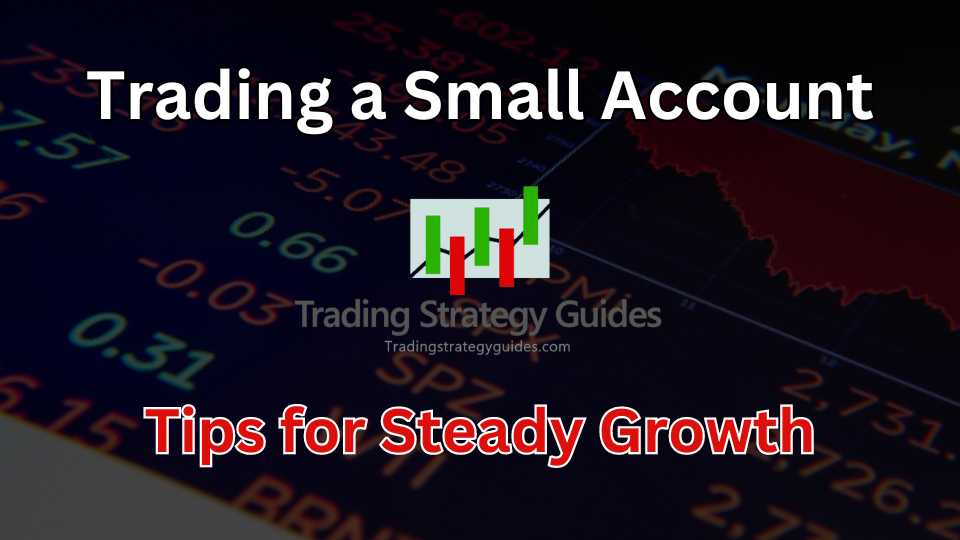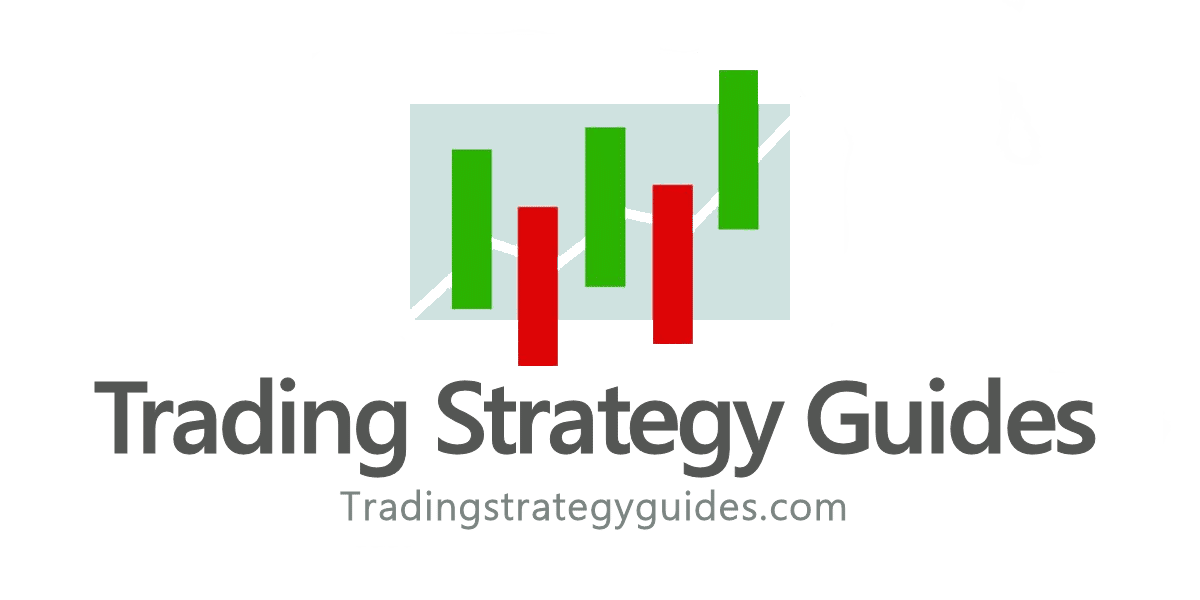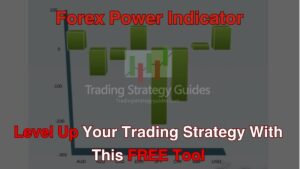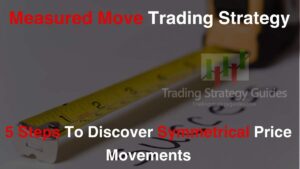Trading a Small Account: Tips for Steady Growth

Trading a Small Account
As a new trader, I had enough money stored away to make a decent-sized trading account. However, I quickly had a small account as my newness and ignorance took control. I blew all of my money learning. At that point, I only knew how not to lose, and I had no money to continue.
I spent several years of my trading learning experience taking small amounts of cash from my day job and trading with it. Consequently, I got pretty good at trading a small account. Trading a small account takes different skills than trading a large account. Most of these skills involve risk management.

Before we begin, thanks for visiting Trading Strategy Guides (TSG)! We are so glad you’ve found us. You have discovered the most extensive library of trading content on the internet. Our aim is to provide the best educational content to traders of all stages. In other words, we want to make YOU a consistent and profitable trader.
If you’re a brand new trader, we recommend hopping over to our ultimate beginner’s guide to trading to learn more.
In this article, we’ll take a closer look at these important skills to trade a small account with patience. Keep reading to learn more!
Table of Contents
What Is a Small Trading Account?
Let’s start by defining a small account. A small account has different definitions depending on your trading instrument. I will draw a line in the sand here and say that a small account is less than 10,000 times the smallest per pip (tick) increment of the instrument you’re trading.
I’ll go into a bit more detail regarding that in a moment, but a small account is one in which you cannot correctly use all the money management tools in your toolbox because you don’t have enough margin in your account to handle it.
To calculate my definition of a small account. Let’s look at the EUR/USD for a moment. Generally, on the MT4 platform, the minimum trade size is 0.01 standard lots – a micro-lot – or 100th of a standard lot, 1000 Euros. The value per pip in USD (I know that not everyone enumerates their account in USD.; I will, however, use USD for all of the examples in this class) is $0.10.
Roughly multiply that by 10,000 (=$1000) to get an idea of what I consider large enough to easily maintain your risk parameters (for EUR/USD trading). Anything smaller than that, I would consider a small account. I know that $1000 is a pretty small account, but you should be able to use proper risk management in an account of that size.
Of course, if you’re trading, for example, Mini-Dow Futures (YM), the smallest tick is $5 per contract. So, multiplied by 10,000, you will need a $50,000 minimum to maintain your risk correctly. I would consider anything less than that for the YM to be a small account.
Another example might be the eMini S&P (ES), which has a $10 per contract minimum. So, you should have at least $100,000 to consider this a large account. And, of course, you are stuck with a minimum of $25,000 in the U.S. for stock day trading minimum capital.
Risk Management Is What Makes It Tough to Trade with a Forex Mini Account

That’s not to say that you can’t trade these instruments with smaller accounts. I think you can easily trade the futures with accounts as small as $10,000. To do so, you will need strategies that allow for the fact that you can’t have 1/10th size increments for building, reducing positions, and so on.
For the purposes of this class, we will only be discussing forex.
Patience Is an Important Factor When Trading a Small Account
PATIENCE! Since you cannot size your account down as much (relatively) with a small account, you have to be sure you can get the best entries possible. Getting the best entries requires patience, patience, and more patience. That is how to grow a small trading account.
If you have a larger account, you can enter experimental positions with 1/10th of your normal size to see how it does. Your profit will be smaller, but so will your loss. With a small account, you don’t have that option. Unless you have a broker who allows it, but more on that later.
Trading with a Small Account Strategies
Develop your strategies so you maximize entries, reduce risks, and help grow a small Forex account. For example, holding out until the last second on a reversal trade serves two purposes:
- You will get a better price before the reversal occurs.
- You will reduce your loss if the price doesn’t reverse.
As you know, I use the bullet strategy on reversal trades. If I’m trading a small account, I have limited options for sizing the trade. Hence, I can only go in half-size (my normal position size is 0.02 lots).
If I want to increase my subsequent bullet size, my only option is to double the size, which approaches gambling (doubling down). The result of doubling increases the risk dramatically and can cause relatively huge losses if price action doesn’t reverse in due time.
The rules I use for the momentum trade are designed for a small account. With a larger account, I would enter a position using a market order when we get our momentum signal and all criteria are met (check the Momentum Strategy Checklist). I would use a smaller size (½-¾).
If the price never pulled back to the 20 SMA, we would have some profit from the trade. Then, we would have capitalized on the impulsive move. If it did pull back to the 20 SMA, I would add a larger size (say a 20-25% increase over the “normal” size) and let the trade run using the loss exit and take profit plans worked well.
That way, we get profit if it doesn’t pull back and more profit if it does pull back. The sizing of the positions would ensure we minimize our loss if it never goes our way.
Since our account size doesn’t allow us to manipulate the trade sizes that way (remember our minimum size is 0.01 lots), we have to use the best possible scenario – the pullback to the 20 SMA. Even if it means we will miss some trades because the price never pulled back to there.
Missed Trades Is the Penalty of Patience

The penalty for patience is missed trades. Yes, we will miss a few trades, but the ones we get into will have a greater possibility for reward and a smaller risk if the price goes against us.
Furthermore, the reversal rules are also optimized for each Forex mini account. Our “Reversal Min” number ensures that the price has moved sufficiently for a reversal. My interpretation of the H4 move is also designed to ensure an imminent reversal.
Lastly, the experimental 15 min RSI(8) divergence is also designed so we can be sure to get our reversal without adding additional positions.
Learn to Read Price Action Indicators
In addition to our trade rules, you should be particularly conscious of the price action. Watch for stalling and reversal signals to get in or out of trades at the right time. Recognizing these price action signals requires time and experience.
Plus, if you’re going to trade using price action signals, be sure you know yourself. Don’t allow yourself to back out of positions just because the price might be going against you.
Make sure that you are seeing real price action signals. This includes pin bars, rejection wicks, price movement as it approaches the support, and resistance zones, among others).
Trading a large account is MUCH easier than trading a small account. That may seem obvious, but it’s not for obvious reasons. When you trade a large account, your trade size is larger and can be split more incrementally.
For example, if your normal trade size is 0.02 lots, you can split it in half, and that’s it. However, if your normal trade size is 0.20 lots, you can split it 20 ways. You can enter a trade ½ size and add 10% for each additional position, or you can enter ¼ size and add 20% for each additional position.
In either of these cases, you will not be up to your full size for many positions. If you want to be able to do that and you don’t have enough trading money, you can open a small trading account with the broker Oanda. Oanda will allow you to trade in increments of one unit of currency. That’s 1000th of a micro lot.
Some Brokers Allow Smaller Trade Increments

The downside of trading with Oanda is limited leverage. U.S. accounts will only get 50-1 leverage (I have 1000-1 with Trader’s Way). Non-U.S. accounts get 100-1 leverage. 100-1 is better, but it is still challenging to put on many positions. However, if you use my arbitrary 10,000 multipliers, you will find that you only need $1.00 to have a “large” account with Oanda (1 unit of EUR/USD is $0.0001 per pip).
While I was floundering in my trading, I was able to trade with Oanda and gauge my learning using $100 trading accounts. Of course, making $0.02 on a trade seemed counterproductive, but it was more real than trading a demo account. Regardless, I was happy to do Forex trading with 100 dollars.
If you want to use MT4 with Oanda, you’re still relegated to a minimum of 1 micro lot. However, Oanda now includes TradingView charting, so you can trade directly from nice charts and use single-unit trade sizes.
These are just a few things to remember when you are trading a small account. The most important thing to remember is that patience is key when trading Forex.
How to Grow a Small Account: Day Trading Tips
Growing a small trading account can be a challenging yet rewarding endeavor. Here are some additional tips to help you maximize your potential in the day trading arena:
- Set realistic goals: Understand that growing a small account won’t happen overnight. Set achievable targets for growth, and don’t be discouraged by small gains.
- Embrace a disciplined approach: Discipline is key in day trading. Stick to your trading plan, avoid impulsive decisions, and don’t chase losses.
- Focus on high-probability trades: Identify trades with a high probability of success. This means understanding market trends and using technical analysis to find the right entry and exit points.
- Limit your exposure: Use a small percentage of your account on any single trade. A common rule is not to risk more than 1-2% of your account balance on a single trade.
- Utilize leverage carefully: While leveraging can amplify gains, it can also magnify losses. Be cautious and understand the risks before using leverage.
- Continuous learning: Stay informed about market trends and continually educate yourself. The more you know, the better your trading decisions will be.
- Practice risk management: Always use stop-loss orders to limit potential losses. This is crucial in preserving your capital.
- Monitor and review: Regularly review your trades to understand what works and what doesn’t. This reflection can help improve future strategies.
- Keep emotions in check: Don’t let emotions drive your trading decisions. Stick to your strategy even when it’s tempting to deviate.
- Diversify within reason: While diversification is wise, over-diversification in a small trading account can dilute potential gains.
By incorporating these tips into your day trading strategy, you can increase the chances of successfully growing your small account. Remember, patience and consistent practice are the keys to success in the volatile world of Forex trading.
Final Thoughts
Trading a small account, particularly a Forex mini account, requires a unique blend of patience and skill. The journey, often daunting for new traders, is rife with learning experiences that shape a more disciplined trading approach.
Emphasizing risk management and strategic patience, this guide underscores the importance of making well-calculated decisions in Forex trading. Small account trading isn’t just about the balance you start with but the growth and learning that come with each trade.
Stay focused, be patient, and use the insights shared here to navigate the Forex market with confidence and competence.
Thank you for reading!
Please leave a comment below if you have any questions about Trading a Small Account!
Also, please give this strategy a 5 star if you enjoyed it!






Price Action is so important. I think every trader need it.
yes that is very true price action is a critical component of trading.
Hey guys…I see you are talking about this Price Action thing…where can I learn more about it?
https://tradingstrategyguides.com/price-action-trading-strategy/ here is some really good information.
Patience is most important because we just small , we need follow trend and buy or sell in short time.
true
how can i understand when i need to short and when i need to long?
From your view, price action will maximize the function when we use in which timeframe ?
I have been exploring for a bit for any high-quality articles or blog posts on this sort of area . Exploring in Yahoo I at last stumbled upon this site. Reading this information So i’m happy to convey that I’ve a very good uncanny feeling I discovered exactly what I needed. I most certainly will make certain to don’t forget this site and give it a glance on a constant basis.